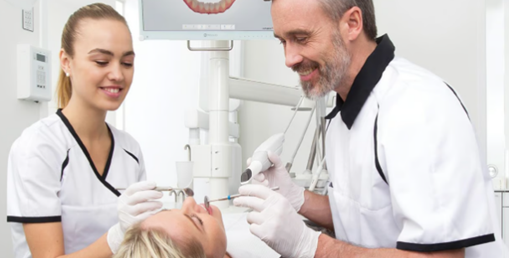Numerous dental digital scanners are currently available on the market, offering a wide range of features and benefits from various brands.
Some brands are relatively new to this technology, while others have been producing for over a decade. These long-standing manufacturers have led the field with award-winning products across multiple generations of equipment.
An important step in the digitalization journey is choosing the intraoral scanner technology that fits your practice and specific specialty needs, whether simply digitizing your lab workflow or digitally scanning dentures to digitize your prosthesis workflow.

The Institute of Digital Dentistry began its transformation to digital dentistry over a decade ago. "Today, all of our clinics are equipped with dental digital impression scanners and CAD/CAM technology. We firmly believe that digitalization will revolutionize your practice and make dental treatment more enjoyable for you and your patients," says Dr. Ahmad Al-Hassiny, Director of the Institute.
What do patients think of intraoral scanners?
Digital dental scanners may be incredibly useful to the professionals who use them, but they are meaningless if the patient experience is challenging. A review of the paper "Orthodontic Intraoral Scanners: A Critical Review" found that patients not only accept dental oral scanners but often prefer them over traditional methods.
Overall, intraoral scanning technology is more comfortable than traditional methods. "When examining comfort after both traditional impressions (polyvinyl siloxane or alginate) and intraoral scans, patients reported that digital methods and alginate impressions were statistically more comfortable than PVS impressions."
Intraoral scanners also scored higher in comfort, gag reflex, and dyspnea. Three studies examining the incidence of the gag reflex concluded that it was significantly reduced or even eliminated with digital methods. "Because of the absence of the gag reflex, digital impressions are perceived as more pleasant and pleasant to smell/sound and taste/heat." Intraoral Scanner Price: What to Expect?
Any reasonable investment depends on a realistic return on investment (ROI). What cost offsets can be achieved? Can you align the ROI with patient care? Dr. Naren Rajan of New Jersey, USA, says there's no doubt that 3D intraoral scanners are worth the money.
For example, he explained that his team used to spend "all day" taking impressions, with one team member responsible for sterilizing them, managing prescription orders, managing shipping, return dates, pouring contralateral models (if one was needed), and so on. Now, they no longer have to do any of this, which translates directly to significant savings, as they can now manage that team member's time more efficiently.
"We can now say, 'Just go to the next patient, the case has been sent.' There's no extra lab work or rushing to a UPS or FedEx box at the end of the day. We noticed this quickly, and for dentists who weren't already doing it, it's one of the main advantages of switching to intraoral scanning technology."
Conclusion: Dental Intraoral Scanners Make a Difference
Digitalization in dentistry began decades ago, and like many digital transformations, its initial applications were limited. However, today, digital technology is widely adopted, and its use in dental treatment planning is growing exponentially.
Dental digital scanning has made great progress in the fields of restoration, implantology and orthodontics. Intraoral scanning technologies can not only help doctors perform treatments more accurately and quickly and improve hygiene standards; they can also improve patient comfort, increase patient interaction with dentists, and make patients more satisfied through the results they see in real time on the screen.